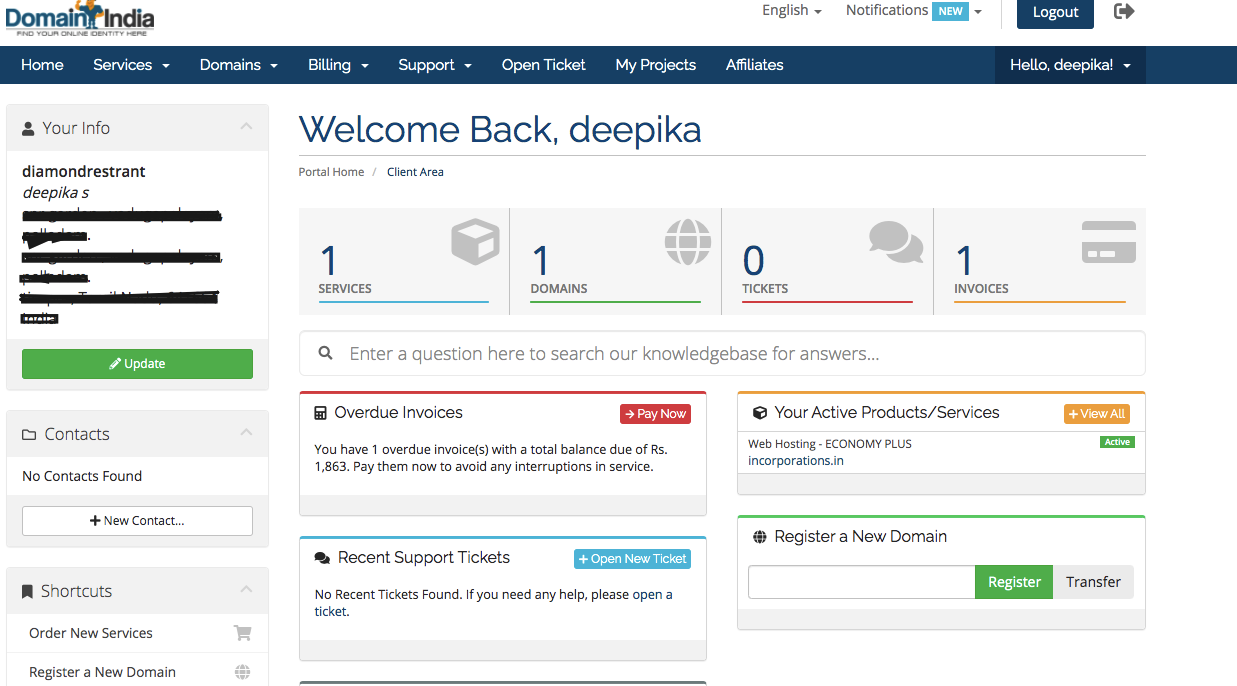How to Craft Page Titles and Meta Descriptions Like a Pro: An SEO Expert’s Guide with Sample Code

Introduction
So, you’ve got a fantastic website up and running, but you’re not seeing the results you want? It’s time to up your SEO game, and one of the key elements you need to focus on is your page titles and meta descriptions. If you’re looking for a surefire way to boost your website’s visibility, this comprehensive guide is just the ticket! We’ll walk you through everything you need to know, including sample code and best practices, so you can become an SEO expert in no time.
How to Write Page Titles and Meta Descriptions
1. Understand the Importance of Page Titles and Meta Descriptions
Before diving into the nitty-gritty, it’s crucial to understand the role that page titles and meta descriptions play in SEO. These elements work hand in glove with search engine algorithms to influence your website’s ranking and click-through rates. So, if you want to get your website noticed, you’d better pay attention to these little details!
2. Keep It Short and Sweet
When it comes to crafting page titles and meta descriptions, brevity is your friend. Search engines typically truncate page titles at around 60 characters and meta descriptions at around 155 characters. So, to ensure your entire message is displayed, stick to these limits.
3. Incorporate Keywords
Keywords are the bread and butter of SEO. Make sure to include your target keywords in both your page titles and meta descriptions, but avoid keyword stuffing. Aim for a natural and reader-friendly tone.
4. Create Click-Worthy Titles
Your page title should be enticing and informative, encouraging users to click through to your website. To make it more appealing, use numbers, questions, or power words, and avoid jargon or technical terms.
5. Write Descriptive Meta Descriptions
Meta descriptions should provide a brief overview of the page content and include a call to action. This will encourage users to click through and engage with your content.
Sample Code for Page Titles and Meta Descriptions
For those of you who are more hands-on, here’s a sample code snippet to help you get started with adding page titles and meta descriptions to your website:
<!DOCTYPE html>
<html lang="en">
<head>
<meta charset="UTF-8">
<meta name="viewport" content="width=device-width, initial-scale=1.0">
<title>Top 10 Web Hosting Services in India | Best Web Hosting 2023</title>
<meta name="description" content="Discover the top 10 web hosting services in India for 2023. Compare features, pricing, and customer reviews to find the perfect web hosting provider for your needs.">
</head>
<body>
<!-- Your website content goes here -->
</body>
</html>Optimizing Page Titles and Meta Descriptions for SEO
6. Be Unique
Ensure that your page titles and meta descriptions are unique for each page on your website. This will help search engines understand the content of each page and improve your overall SEO.
7. Use Title Tags Wisely
Title tags are essential for SEO, so make sure to use them correctly. Place your primary keyword at the beginning of the title, followed by a separator, and then your brand name.
8. Leverage Long-Tail Keywords
Long-tail keywords are longer and more specific keyword phrases that can help you rank higher in search results. Include these in your page titles and meta descriptions to target users who are more likely to convert.
9. Use Action Words and Power Phrases
Incorporate action words and power phrases in your meta descriptions to compel users to click on your link. Examples include “Discover,” “Learn,” “Master,” and “Boost.”
10. Match User Intent
Understand your target audience’s needs and tailor your page titles and meta descriptions accordingly. This will help ensure that your content resonates with users and improves your click-through rates.
The Art of Crafting Engaging Keywords and Cards
11. Choose the Right Keywords
Perform thorough keyword research to identify the most relevant and high-traffic keywords for your website. Tools like Google Keyword Planner, SEMrush, and Ahrefs can help you with this task.
12. Optimize Your Keyword Strategy
Analyze the performance of your keywords regularly and make adjustments as needed. This will help you stay ahead of the competition and maintain your search engine rankings.
Creating Captivating Cards for SEO
13. Understand the Role of Cards in SEO
Cards, such as Twitter Cards and Open Graph tags, play a vital role in enhancing your content’s visibility on social media platforms. These tags provide a preview of your content and encourage users to click through to your website.
14. Use the Right Card Type
Choose the appropriate card type based on your content. For example, use a Summary Card for blog posts and an App Card for promoting a mobile app.
15. Include Attention-Grabbing Images
Use high-quality, relevant images in your cards to attract users and boost click-through rates.
Best Practices for SEO Experts
16. Monitor Your Results
Keep an eye on your website’s performance by regularly tracking key SEO metrics, such as organic traffic, bounce rate, and conversion rates.
17. Stay Updated with SEO Trends
The world of SEO is constantly evolving. Stay informed about the latest trends and algorithm updates to ensure your website remains competitive.
18. Optimize Your Content for Mobile Devices
With the majority of internet users accessing websites via mobile devices, it’s crucial to optimize your content for a seamless mobile experience.
19. Focus on User Experience
A user-friendly website with easy navigation, quick load times, and engaging content will not only improve your SEO but also boost user satisfaction and conversion rates.
20. Don’t Neglect Technical SEO
Technical SEO elements, such as sitemaps, robots.txt files, and site speed, play a crucial role in your website’s overall SEO performance. Make sure to optimize these aspects for the best results.
Creating captivating cards for SEO involves using specific meta tags for different social media platforms. Below, you’ll find sample code for the most popular cards: Twitter Cards and Open Graph tags for Facebook.
Twitter Cards
To implement Twitter Cards, you’ll need to include the following meta tags within the <head> section of your HTML document:
1. Summary Card
<head>
<!-- Add the following meta tags for Twitter Summary Card -->
<meta name="twitter:card" content="summary">
<meta name="twitter:site" content="@YourTwitterHandle">
<meta name="twitter:title" content="Top 10 Web Hosting Services in India | Best Web Hosting 2023">
<meta name="twitter:description" content="Discover the top 10 web hosting services in India for 2023. Compare features, pricing, and customer reviews to find the perfect web hosting provider for your needs.">
<meta name="twitter:image" content="https://example.com/path-to-your-image.jpg">
</head>2. Summary Card with Large Image
<head>
<!-- Add the following meta tags for Twitter Summary Card with Large Image -->
<meta name="twitter:card" content="summary_large_image">
<meta name="twitter:site" content="@YourTwitterHandle">
<meta name="twitter:title" content="Top 10 Web Hosting Services in India | Best Web Hosting 2023">
<meta name="twitter:description" content="Discover the top 10 web hosting services in India for 2023. Compare features, pricing, and customer reviews to find the perfect web hosting provider for your needs.">
<meta name="twitter:image" content="https://example.com/path-to-your-image.jpg">
</head>Open Graph Tags for Facebook
To implement Open Graph tags for Facebook, include the following meta tags within the <head> section of your HTML document:
<head>
<!-- Add the following meta tags for Facebook Open Graph -->
<meta property="og:type" content="website">
<meta property="og:url" content="https://example.com/your-page-url">
<meta property="og:title" content="Top 10 Web Hosting Services in India | Best Web Hosting 2023">
<meta property="og:description" content="Discover the top 10 web hosting services in India for 2023. Compare features, pricing, and customer reviews to find the perfect web hosting provider for your needs.">
<meta property="og:image" content="https://example.com/path-to-your-image.jpg">
<meta property="og:image:width" content="1200">
<meta property="og:image:height" content="630">
</head>By using these sample codes, you can create captivating cards for your website’s content, ensuring that your SEO efforts extend to social media platforms and drive more traffic to your site.
To further enhance your website’s SEO, you can implement structured data using Schema.org markup. This will help search engines better understand your content and provide richer search results, potentially leading to higher click-through rates.
Here are some sample code snippets for implementing various types of schema markup:
1. Organization Schema
To add an Organization schema to your website, include the following JSON-LD script in the <head> section of your HTML document:
<head>
<script type="application/ld+json">
{
"@context": "https://schema.org",
"@type": "Organization",
"name": "Your Company Name",
"url": "https://www.example.com",
"logo": "https://example.com/path-to-your-logo.jpg",
"sameAs": [
"https://www.facebook.com/yourcompany",
"https://twitter.com/yourcompany",
"https://www.linkedin.com/company/yourcompany"
]
}
</script>
</head>2. Local Business Schema
If your website represents a local business, you can use the LocalBusiness schema. Include the following JSON-LD script in the <head> section of your HTML document:
<head>
<script type="application/ld+json">
{
"@context": "https://schema.org",
"@type": "LocalBusiness",
"name": "Your Business Name",
"image": "https://example.com/path-to-your-image.jpg",
"url": "https://www.example.com",
"telephone": "+91-123-456-7890",
"priceRange": "₹₹",
"address": {
"@type": "PostalAddress",
"streetAddress": "123 Your Street",
"addressLocality": "Your City",
"addressRegion": "Your State",
"postalCode": "123456",
"addressCountry": "IN"
},
"geo": {
"@type": "GeoCoordinates",
"latitude": 12.9715987,
"longitude": 77.5945627
},
"openingHours": "Mo,Tu,We,Th,Fr 09:00-18:00"
}
</script>
</head>3. Breadcrumb Schema
To add breadcrumb navigation schema to your website, include the following JSON-LD script in the <head> section of your HTML document:
<head>
<script type="application/ld+json">
{
"@context": "https://schema.org",
"@type": "BreadcrumbList",
"itemListElement": [
{
"@type": "ListItem",
"position": 1,
"item": {
"@id": "https://example.com/",
"name": "Home"
}
},
{
"@type": "ListItem",
"position": 2,
"item": {
"@id": "https://example.com/blog/",
"name": "Blog"
}
},
{
"@type": "ListItem",
"position": 3,
"item": {
"@id": "https://example.com/blog/your-article/",
"name": "Your Article Title"
}
}
]
}
</script>
</head>These sample code snippets are just a starting point for implementing schema markup on your website. There are many other schema types available at Schema.org, so explore and choose the ones that best suit your website’s content. Implementing structured data will give search engines more context about your content
Conclusion
Mastering the art of writing page titles, meta descriptions, keywords, and cards is an essential skill for anyone looking to improve their website’s SEO. By following the tips and best practices outlined in this guide, you’ll be well on your way to achieving higher search engine rankings and increased visibility for your website. So, roll up your sleeves and start optimizing your content today!










